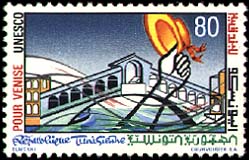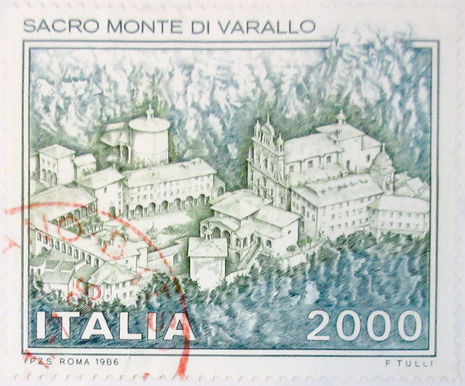



Piazza del Duomo houses a group of world famous monuments which had a great influence on monumental art in Italy from the 11th to the 14th centuries. The four masterpieces of medieval architecture: the cathedral, the baptistry, the campanile (Leaning Tower) and the cemetery.
The Bourbon royal palace was built in Caserta in the 18th century. The palace served as headquarters of Allied command and was the site of surrender of the German Army in Italy in WW II.
Dating back to 1545, the botanical garden in Padua is regarded as the most ancient university garden in the world.
Was a Roman villa of the Late Empire; noted as one of the most important archaeological discoveries in Roman Sicily, famous for its mosaics.

The Amalfi coast is an area of great physical beauty and natural diversity. It has been intensively settled by humans since the early Middle Ages and has a number of architectural and artistic works of great significance.
Founded by colonists from Gela ca. 580 BC, the town was destroyed by Carthage in 406 BC. The place was rebuilt by Timoleon, a leader of Syracuse. Also known as the scene of defeat of the Carthaginian general Hanno by Romans 262 BC.
Includes the Archaeological sites of Paestum and Velia, and the Certosa di Padula.
Includes Caltagirone, Catania, Militello Val di Catania, Modica, Noto, Palazzolo Acreide, Ragusa, and Scicli.

The nine Sacri Monti ("Sacred Mountains") of this region of northern Italy are groups of chapels and other architectural features created in the late 16th and 17th centuries and dedicated to different aspects of Christian belief.
The Nine Sacri Monti are:
Tarchon was the legendary founder of Tarquinia; reputedly the oldest Etruscan city in Italy. It was noted as the earliest settlement in Etruria of the Villanovans and came under Rome probably by late 4th century BC, gained Roman citizenship in 90 BC. The ancient site was abandoned in the 8th or 9th century CE, when modern Corneto (since 1922 known as Tarquinia) was founded nearby.
The necropolis near Cerveteri, known as Banditaccia, contains thousands of tombs organized in a city-like plan, with streets, small squares and neighbourhoods.
Le Strade Nuove consists of the Via Garibaldi, Via Balbi and Via Cairoli. They are known for their aristocrat houses and the Palazzi dei Rolli.
Joint listing with Switzerland

The Dolomites are a limestone mountain range forming part of the Alps. The designated site contains 9 different areas:
Joint listing with Austria, France, Germany, Italy, Slovenia, and Switzerland. This property includes 111 small individual sites with the remains of prehistoric pile-dwelling (or stilt house) settlements in and around the Alps built from around 5000 to 500 B.C.
Includes seven groups of important buildings.
12 villas in Tuscany

Mount Etna is the highest Mediterranean island mountain and the most active stratovolcano in the world. The eruptive history of the volcano can be traced back 500,000 years and at least 2,700 years of this activity has been documented.
Five distinct wine-growing areas with outstanding landscapes and the Castle of Cavour.
Nine structures on the northern coast of Sicily.
For more links see Joint listing with Slovakia.
Joint listing with Albania, Austria, Belgium, Bosnia and Herzegovina, Bulgaria, Croatia, Czechia, France, Germany, Italy, Macedonia, Poland, Romania, Slovakia, Slovenia, Spain, Switzerland, and Ukraine. These are the largest remaining virgin forests of the European beech (Fagus sylvatica). They also hold the largest and tallest beech specimens in the world. This site originally consisted of ten separate components along an 185 km axis from the Rakhiv Mountains and the Chornohirskyi Range in the Ukraine, west along the Polonynian Ridge, to the Bukovske Vrchy and Vihorlat Mountains in Slovakia. The listing was extended in 2011 to include 5 Ancient Beech forests in Germany, further extended in 2017 to include more forests in 10 countries, and further extended in 2021.
Joint listing with Croatia and Montenegro. This property consists of 15 components of defence works in Italy, Croatia and Montenegro, spanning more than 1,000 kilometres between the Lombard region of Italy and the eastern Adriatic Coast. The fortifications throughout the Stato da Terra protected the Republic of Venice from other European powers to the northwest and those of the Stato da Mar protected the sea routes and ports in the Adriatic Sea to the Levant.
Located in north-eastern Italy, the site includes part of the vinegrowing landscape of the Prosecco wine production area.
The site is composed of eight building complexes within the historic walled city of Padua. These house a selection for fresco cycles painted between 1302 and 1397 by different artists for different types of patrons.
This joint listing comprises 11 towns, located in seven European countries. All of these towns developed around natural mineral water springs.
More than 800 kilometres long, the Via Appia is the oldest and most important of the great roads built by the Ancient Romans. It was constructed and developed from 312 BC to the 4th century AD.
Last updated: July 23, 2025